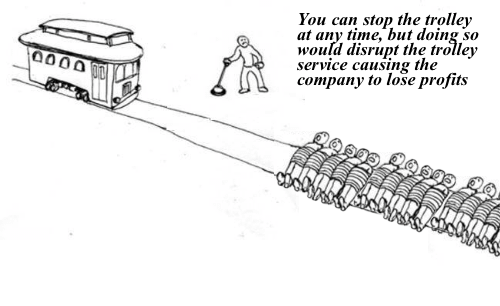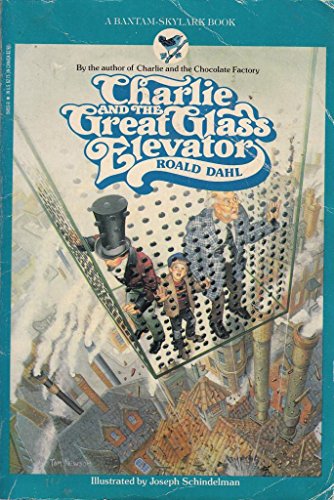The Plague Film Bonanza has sprawled large enough to require a central control and table of contents, so I'll have the rules here, and links to each of the installments.
To Recap:
Weirdo that I am, I'm commemorating the CoVid19 lockdown by watching plague movies. Some people cope with stress and anxiety by rewatching
The Princess Bride or
Singin' In The Rain, but I do it by going dark. If you also deal with uncertainty by watching movies about
other people in even
more stressful situations, this here is for you!
Maybe you dealt with a coming lockdown by buying (or trying to buy) facemasks, hand sanitizer, and ungodly amounts of toilet paper, or adjusting weekend plans. Well, I went and found every movie about infectious diseases I could and have been watching them one by one. So if you're housebound anyway, why not pass the time scaring the crap out of yourself, right?
I'm writing mini-reviews of some classic, less-than-classic, and absolute garbage plague films, and because I love you, I'm writing them up for you, readers, and I'll end the series with a nice best-of countdown!
To sum up the ground rules:
Qualifying:
Rule 1: It has to be a narrative film. There might be some great plague television out there, but I have a kid who is apparently studying from home until he is forty: binging entire seasons of TV series' that are too scary to share with him is off the table. Documentaries would require an entirely different scoring system, so they're out, too. Most, but not all the films here are fiction, and I'm limiting the series to narrative films.
Rule 2: The film has to be about a plague or viral infection. That is, it must put significant attention on what the infectious agent is, how it spreads or works, and what can be done
about the infection. If the response is "we need to hide from/kill all the zombies" (
Dawn of the Dead) it's not
really a plague film: it's a zombie or monster film. If the response is "we can beat this if we discover and exploit a weakness in how the virus spreads" (
World War Z) then it's a plague film. Both are zombie films, but only one is a plague film. Another example: if the vial of plague pathogen in
Mission: Impossible 2 were replaced with a computer chip, or a piece of microfilm, the rest of the film basically wouldn't change, so
Mission: Impossible 2 is a
MacGuffin chase, not really a plague film. There's a little wiggle room here, and I'll be making some calls. If that makes you mad, write your own blog series.
Theory of Scary Movies (context):
Films that hold my attention are scored on four dimensions, with one bonus category, but for my first two categories, I need to explain my theory of scary movies.
Because plague films are usually scary, I need to explain that there are two ways scary movies scare us. Think of Alfred Hitchcock's
bomb theory: a bomb exploding under a table
surprises the audience, but if the audience knows there's a bomb under the table and it
doesn't explode, we get suspense. A surprise
can be part of good storytelling, but it can also be a cheap trick. Suspense makes small, mundane details suddenly important or compelling.
Scares work this way, too. Some movies scare us by having a monster jump out of the closet. These are usually called jump-scares, and they're scary for five seconds, like the bomb under the table exploding. The new
It remake films use this trick again and again. A good jump-scare comes from sound design, editing, and camera work. There's a craft to it, but it's simple setup and payoff. Make people think something is coming, and then defy expectations before delivering it in a way that manages to still surprise. Jump scares aren't the only kind of scare that's right out in front of the camera, and in the viewer's face. Jump-scares are the result of skillful sound design and editing. Scary images are a result of skillful design. Body horror (body parts, things getting cut off, melting skin, guts, pus, stuff happening to human bodies that isn't supposed to happen) is also right in the viewer's face, and it comes from good special effects and prop design. Gross-out horror (blood, vomit, pus, other body fluids) are an adjacent category. If the scare is right out on the surface, and the film makes me jump like a cat, shiver in fright at the creature's face, or retch with
squick about the stuff that just came out of that guy's ear, I'm measuring this kind in my
"Scary" category.
Like the bomb under the table that
doesn't explode, other movies scare us by having a character
suspect there's a monster in the closet, and find they're too afraid to open the door and check. Suddenly, that closet door is scary all by itself. We see the hero, afraid to look around the corner, and we don't even need to see what the monster looks like. A thump in the attic, a muffled sound in the cellar, and
did that shadow just move? This creates anxiety. My favorite horror movies set an ominous tone, convincing me
something bad is going to happen and let that dread build and build. The payoff, when it comes, is more satisfying because the film set it up so carefully and let my imagination do the rest of the work. Think of the films
Paranormal Activity, The Others, or
The Babadook. It doesn't even need to be outright horror:
We Need to Talk About Kevin is a great example of this in the psychological thriller genre.
The imagery isn't necessarily gory and if there are jump-scares, their purpose is to increase the ongoing sense of anxiety. This kind of scare sticks with you. Unlike the chill that's gone in five seconds, these movies have you checking your locks or changing your passwords a week after the film is over. I'm measuring this in my
"Frightening" category. I personally prefer this type of scare, though the best scary movies (
It Follows, The Thing, The Ring, A Quiet Place) do both.
The Scoring Categories
The Failed Experiments:
Not all these films are going to be what we conventionally call "good films," but even bad films have ways to hold one's attention. If a film was so dull, poorly made, or predictable that I didn't watch it from beginning to end, and instead skipped to the "good parts," it gets a
DNF (Did Not Finish). I tried, but even as I pretend zombie films are relevant to a global pandemic, I have enough integrity not to review a film I haven't seen all the way through.
The Categories: Each is graded out of five points.
Frightening (Does it create that moody, ominous feeling of dread that builds up, and stays with you afterward?)
Scary (Is it the kind of scary that makes you jump in your seat, or wish you'd eaten a smaller lunch? Surprises and gross-outs get points in this category.)
Plausible (Does the plague, and people's response to it, seem realistic, as if it could possibly happen? If unrealistic, does the film follow its own rules, and unfold believably, granted the initial premise?)
Awesome (Is it a good movie? Does it hit its marks? Are the scary parts scary, the sad parts sad, and the joyful parts joyful?)
Finally, for bonus demerits/points:
"But wait, there's more!" stinger - does the film end by hinting that the infection is on its way to a
sequel new location? You know...the montage where the contaminated water ends up at a bottling factory while ominous music plays, or the one infected cat escapes the exterminators and heads toward the Lincoln Tunnel and the mainland? Yah those are cheesy, and I will be docking points for them, depending on the amount of cheesiness.
By having two categories -- half the entire scoring -- on scariness, this system will over-rate scary movies and under-rate things like dramas or love stories. We'll discuss that as we get into the reviews.
It's unlikely that any film will get a 20/20 on this scale, because frightening, scary and plausible are usually a three-way trade-off: films that make me jump like a cat usually don't also make me fear door handles, and a film that does both probably asks for a big suspension of disbelief in the plausibility category.
Here, then, are links to the film reviews.
CoVideo Corner sidebar: Social Distancing Edition:
This post discusses a set of films about claustrophobia, isolation, boredom and helplessness: the feelings we're all feeling during our stay-at-home quarantines and self-isolation
The Shawshank Redemption (1994)
Cube (1997)
The Shining (1980)
Room (2015)
10 Cloverfield Lane (2016)
Oldboy (2003)
Chicken Run (2000)
Groundhog Day (1993)
The Descent (2005)
Go to Part 1
Films reviewed:
(Carriers (2009)
Deranged (연가시) (2012)
Patient Zero (2018)
Outbreak (1995)
The Bay (2012)
Perfect Sense (2011)
Go to Part 2
감기 (The Flu)
Black Death
Pontypool
Extinction: The GMO Chronicles
괴물 (The Host)
Viral (2016)
The Girl With All the Gifts
Go to Part 3
And The Band Played On (1993)
12 Monkeys (1995)
Cabin Fever (2002)
Planet of the Apes Trilogy (2011-2017)
World War Z (2013)
Contagion (2011)
Go to Part 4
Antiviral (2012)
Maggie (2015)
10 Cloverfield Lane (2016)
Pandemic (2016)
Stephen King's The Stand (1994)
28 Days Later (2002) / 28 Weeks Later (2007) duology
The Invasion (2007)
Go to Part 5 










